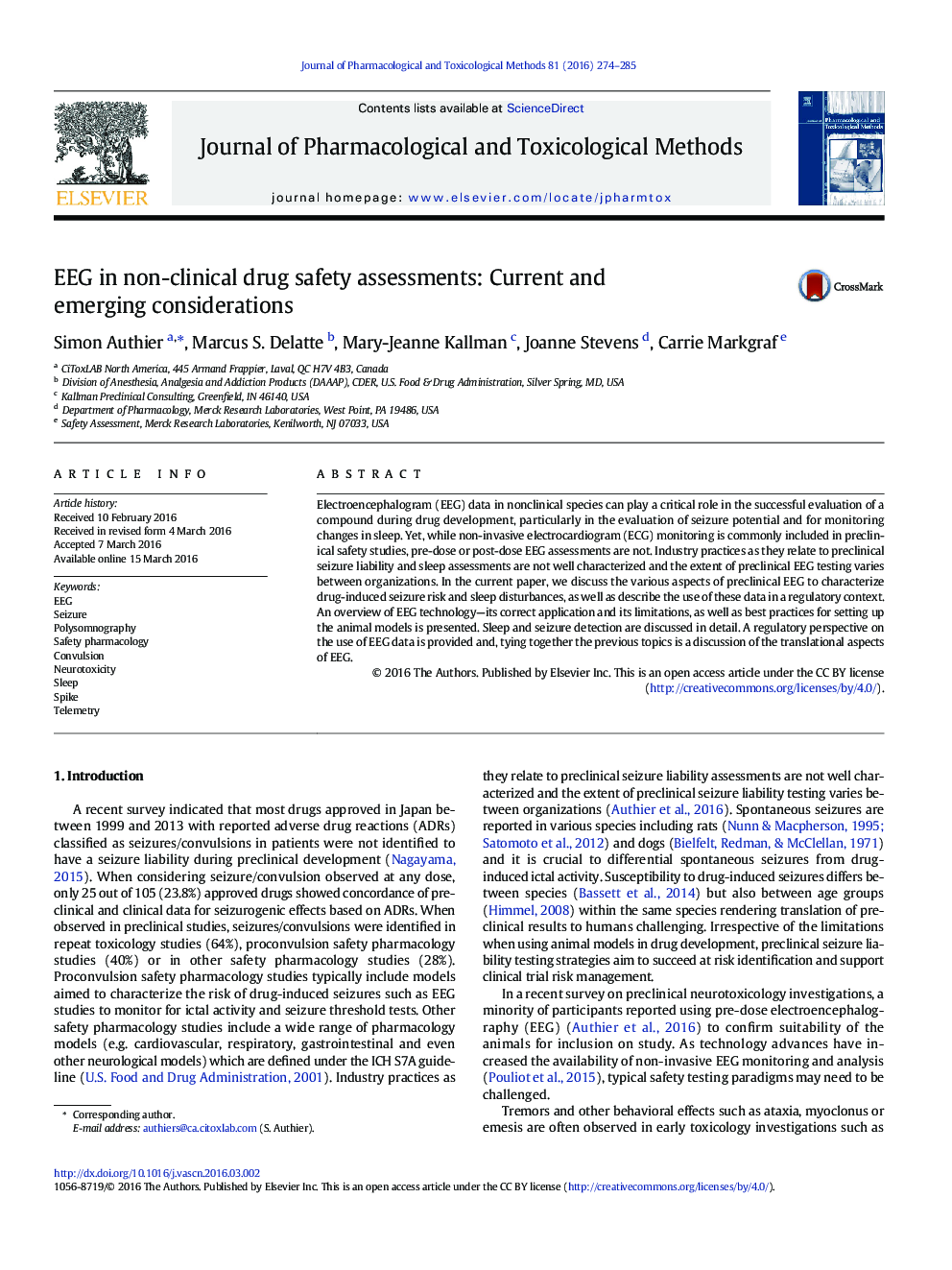| Article ID | Journal | Published Year | Pages | File Type |
|---|---|---|---|---|
| 5556620 | Journal of Pharmacological and Toxicological Methods | 2016 | 12 Pages |
Electroencephalogram (EEG) data in nonclinical species can play a critical role in the successful evaluation of a compound during drug development, particularly in the evaluation of seizure potential and for monitoring changes in sleep. Yet, while non-invasive electrocardiogram (ECG) monitoring is commonly included in preclinical safety studies, pre-dose or post-dose EEG assessments are not. Industry practices as they relate to preclinical seizure liability and sleep assessments are not well characterized and the extent of preclinical EEG testing varies between organizations. In the current paper, we discuss the various aspects of preclinical EEG to characterize drug-induced seizure risk and sleep disturbances, as well as describe the use of these data in a regulatory context. An overview of EEG technology-its correct application and its limitations, as well as best practices for setting up the animal models is presented. Sleep and seizure detection are discussed in detail. A regulatory perspective on the use of EEG data is provided and, tying together the previous topics is a discussion of the translational aspects of EEG.
